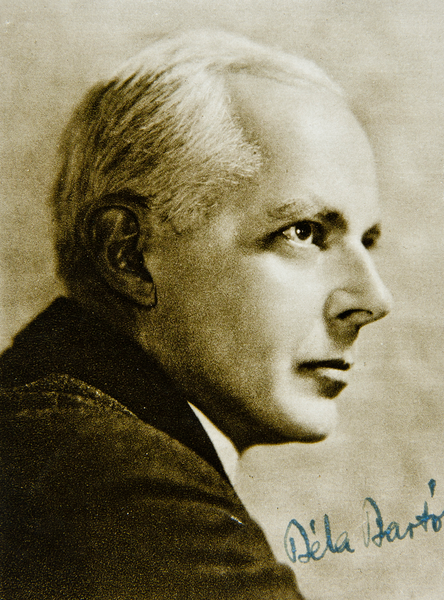HOME > PIANO WORKS
> B.Bartók

Béla Bartók
1881-1945
Hungarian composer. Born in Najuscent Miklos (now Romania). He became familiar with the piano and composition from an early age, and in 1899 he entered the Budapest Royal Conservatory (currently:Franz Liszt Academy of Music), where he studied composition and piano, and also distinguished himself as a pianist.
From 1906, together with Kodály Zoltán , he began collecting folk music in and around Hungary. He incorporated his collections into his own work, developing his own compositional language. He immersed himself in the study of folk music, but Bartók, who was also collecting folk songs in the surrounding areas in the unstable domestic situation, was suspected of being a spy and was regarded as a person to watch. Despite this, Bartók remained in Hungary and actively performed, composed, and researched, but when the Nazis came to power, he finally decided to defect and went to the United States in 1940.
He continued his studies at Columbia University, but he spent his later years in poverty due to the poor economic situation and the fact that life in the United States did not suit him. Eventually his health deteriorated and he was hospitalized. With the help of his friends, his life improved somewhat and he was able to resume his compositional and research activities, but he died of leukemia in 1945.
His works with familiar melodies with folk song motifs, with vivid rhythms, and with modern harmonies and dissonances. However, they are based on classical harmonies and structures. One of the reasons why Bartók‘s music is widely accepted and has become an important repertoire in a wide range of contemporary genres is that it is different from the “atonal music✳︎” that lay before and after the WWⅡ.
✳︎I don’t want to use the term “atonal music” lightly. Does atonal exist in the first place? However, I will not delve too deeply into this topic…… I used the term “atonal music” to describe music that is generally considered (or claims to be) that the sense of tonality has collapsed.
【Q.What is your favorite piece?】
mezzopiano)included in volume 6 of the piano textbook 《Microcosmos》. It’s the final piece. 《Microcosmos》 is a textbook, but with volume 6, the artistry is high, and the technique is also brilliant, and it can be used as a concert piece. This No.153 progresses with a rhythm that divides one bar of 8th notes into “3 + 3 + 2”, and this sustained rhythm is addictive! The progression of the harmonies is so vivid that it gives me chills, and I love the feeling of running right through to the end.
|Piano Works
- 10 Easy Piano Pieces BB 51 Sz.39
- For Children Ⅰ BB 53 Sz.42
- For Children Ⅱ BB 53 Sz.42
- For Children Ⅲ BB 53 Sz.42
- For Children Ⅳ BB 53 Sz.42
- The First Term at the Piano BB 66
- Sonatina BB 69 Sz.55
- Piano Sonata BB 88 Sz.80
|Piano Textbooks
- Mikrokosmos volume1 BB 105 Sz.107
- Mikrokosmos volume2 BB 105 Sz.107
- Mikrokosmos volume3 BB 105 Sz.107
- Mikrokosmos volume4 BB 105 Sz.107
- Mikrokosmos volume5 BB 105 Sz.107
- Mikrokosmos volume6 BB 105 Sz.107
|References / Websites
〈References〉
- バルトーク ミクロコスモスの演奏と指導法/Takashi Yamazaki/ONGAKU NO TOMO SHA CORP.
- わかりやすく、面白い バルトーク ミクロコスモス指導法/Aki Go/ONGAKU NO TOMO SHA CORP.
- 音楽芸術 1994年11月号(特集:バルトークの現在)/ONGAKU NO TOMO SHA CORP
〈Score〉
- Piano Sonata/Universal Edition
- For Children Ⅰ-Ⅱ/Musica Budapest
- For Children Ⅲ-Ⅳ/Musica Budapest
- The First Term at the Piano/Musica Budapest
- 10 easy Piano Pieces/Musica Budapest
- Sonatina/Musica Budapest
- Mikrokosmos volume1-6/Boosey & Hawkes
〈Websites〉